#farm history
Explore tagged Tumblr posts
Text

what is this tool called? It looks like a shovel but too round. Was it just artistic liberty or is it a different tool? Name???
3 notes
·
View notes
Text
after literal years i finally got around to downloading a pdf of the wipers times, an unsancitioned satitical british trench magazine circulated among the troops in france from 1916-1918 after the fortuitous discovery of a printing press. i have approximately five million other things i need to read so idk when i'll be able to devote much time to it, and i gotta pick up a proper copy bc it's missing at least salient no 4 vol 2. that said? i'm genuinely laughing at what i've skimmed so far

#this is like THE page everyone likes it seems but it's SO good#also the flammenwerfer one i found on wikipedia is gold. that's the only reason i know no 4 vol 2 is missing from the pdf after skimming#and 'DEAD COW FARM' CINEMA. is great#the wipers times is SO fascinating to me as a glimpse of life into the trenches without any signifigant censorship of the bitterness that's#couched in satire. it's hilarious satire but there's still bitterness there sometimes! and gallows humor! this was adored by the men on the#front but it's amazing it happened at all. SO glad it did. it's a marvel#len speaks#ww1#world war 1#world war one#the great war#1917#<- figured you guys might find this interesting considering it would be circulating during canon#history
5K notes
·
View notes
Text






#dark academia#dark cottagecore#dark acadamia aesthetic#moodboard#cottagecore academia#cottage academia#academia aesthetic#light academia#reading aesthetic#cottagecore#fairycore#cottage aesthetic#fairy cottage#naturecore#cottage#cozy cottage#grandmacore#cottage witch#grandma core#dark cottage#autumn aesthetic#fall aesthetic#foggy aesthetic#forestcore#vintage aesthetic#vintage core#the secret history#country cottage#dark fairytale#farm core
2K notes
·
View notes
Text


Jöhstadt, Germany 1910
#jöhstadt#1910s#germany#history#vintage#photography#deutschland#architecture#people#landscape#nature#animals#medieval#farming
285 notes
·
View notes
Text









Leverage 3x12 - "The King George Job"
#christian kane#leverage#eliot spencer#alec hardison#aldis hodge#parker#beth riesgraf#the king george job#not to “um actually” you hardison but boysenberries are a 20th century hybrid and not a historically accurate dye#(i only know this because knott's berry farm makes a big deal about the history of boysenberries)#but i feel you hardison. this mindset is very familiar to me
1K notes
·
View notes
Text


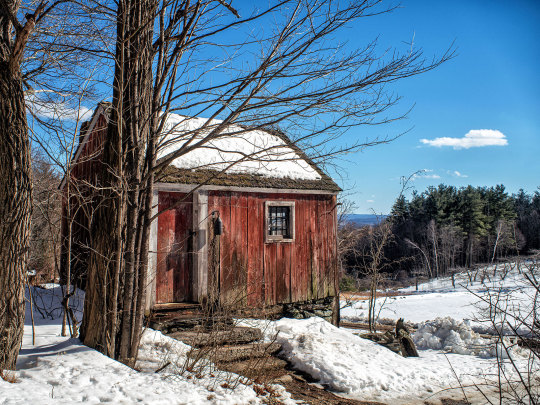
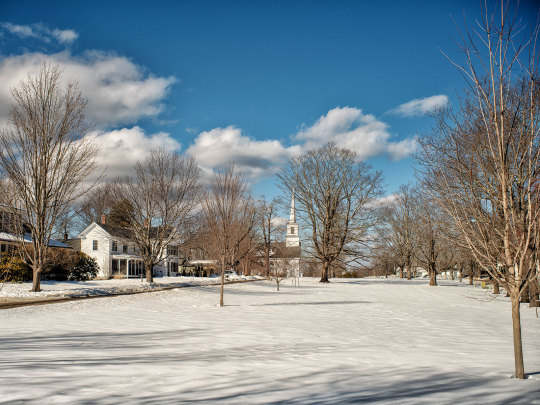
Classic New England
Yashica Yashinon-DX 35mm f/2.8 Sony A7R IIIA
#new england#new england life#photographers on tumblr#original photographers#original photography#historic homes#new england common#barns#fields#farms#woods#history#truck#vintage truck#antique truck#winter#snow#snow scenes#stone walls#colonial home#vintage lens#yashica#yashinon#massachusetts#massachusetts views#guy biechele
231 notes
·
View notes
Text


Farm Life, Ukraine 1907
#farmers#ukraine#1900s#europe#history#vintage#photography#pics#people#farming#housing#landscape#cattle#mountains#river#rural#farm life
165 notes
·
View notes
Text
The Architecture of Rain World: Layers of History
A major theme in Rain World's world design that often goes overlooked is the theme of, as James Primate, the level designer, composer and writer calls it, "Layers of History." This is about how the places in the game feel lived-in, and as though they have been built over each other. Here's what he said on the matter as far back as 2014!

The best example of this is Subterranean, the final area of the base game and a climax of the theme. Subterranean is pretty cleanly slpit vertically, there's the modern subway built over the ancient ruins, which are themselves built over the primordial ruins of the depths. Piercing through these layers is Filtration System, a high tech intrusion that cuts through the ground and visibly drills through the ceiling of the depths.
Two Sprouts, Twelve Brackets, the friendly local ghost, tells the player of the "bones of forgotten civilisations, heaped like so many sticks," highlighting this theme of layering as one of the first impressions the player gets of Subterranean. Barely minutes later, the player enters the room SB_H02, where the modern train lines crumble away into a cavern filled with older ruins, which themselves are invaded by the head machines seen prior in outskirts and farm arrays, some of which appear to have been installed destructively into the ruins, some breaking through floors.
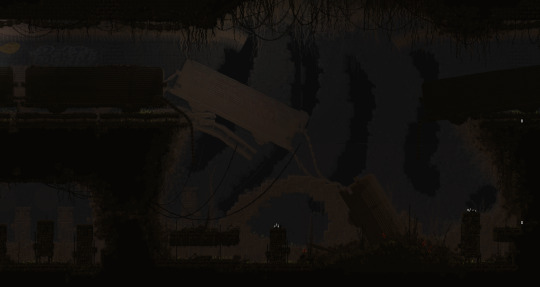
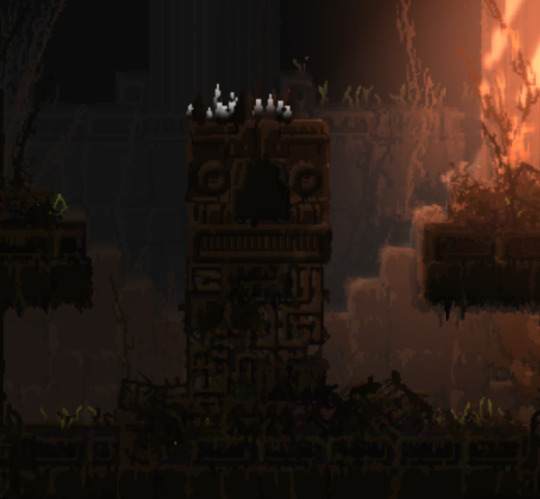
These layers flow into each other, highlighting each other's decrepit state.
The filtration system, most likely the latest "layer," is always set apart from the spaces around it. At its top, the train tunnels give way to a vast chasm, where filtration system stands as a tower over the trains, while at the bottom in depths, it penetrates the ceiling of the temple, a destructive presence. (it's also a parallel to the way the leg does something similar in memory crypts, subterranean is full of callbacks like that!)


Filtration system is an interesting kind of transition, in that it is much later and more advanced than both of the areas it cuts between. This is a really interesting choice from James! It would be more "natural" to transition smoothly from the caves of upper subterranean to the depths, but by putting filtration system in between, the two are clearly demarcated as separate. The difference in era becomes palpable, the player has truly found something different and strange.
Depths itself is, obviously, the oldest layer not only of subterranean but of the game itself. The architecture of Depths has little to do with the rest of the game around it, it's a clear sign of the forgotten civilisations that our friend Two Sprouts, Twelve Brackets showed us, there's not actually that much to say about it itself, it's mostly about how it interacts with the other layers of subterranean.
That said, Subterranean is far from the only case of the theme of layers of history. It's present as soon as the player starts the game!
The very first room of the game, SU_C04, is seemingly a cave. It is below the surface, the shapes of it are distinctly amorphous rather than geometric. (well. kind of, it doesn't do a very good job of hiding the tile grid with its 45 degree angles.)

But let's take a closer look, shall we?

See that ground? it's made of bricks. The entire cave area of outskirts is characterised by this, the "chaotic stone" masonry asset is mixed with brickwork, unlike the surface ruins which are mostly stone. This, seemingly, is an inversion of common sense! The caves are bricks and the buildings are stone. This is not, however, a strange and unique aspect but a recurring motif.
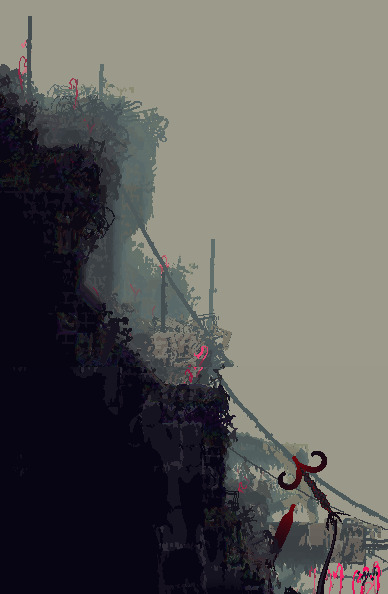
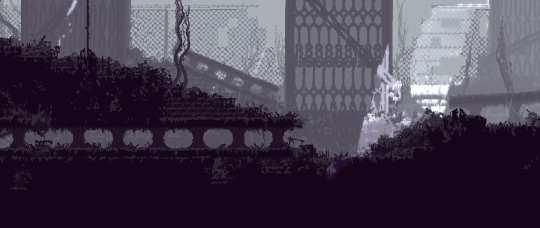
This occurs enough in the game for it to be clearly intentional, but why would materials such as bricks be used in otherwise natural looking terrain?
The answer lies in the "Layers of History" theme. This is in fact, something that happens in real life, and it's called a tell
To be specific, a tell is a kind of mound formed by settlements building over the ruins of previous iterations of themselves. Centuries of rubble and detritus form until a hill grows from the city. Cities such as Troy and Jericho are famous examples. The connections to the layers of history theme are pretty clear here, I think. Cities growing, then dying, then becoming the bedrock of the next city. The ground, then, is made of bricks, because the ground is the rubble of past buildings. The bones of forgotten civilisations, heaped like so many sticks!
#rain world#rainworld#rain world lore#rainworld lore#rw lore#rw#subterranean my beloved#thank you to videocult for making the first survival game themed around stratigraphy and new york city rats#i would've gone on for another paragraph about how OE relates to this but like.#that's dlc stuff#and i still think of the dlc stuff as modded content lol#better to keep it separate#also this analysis is not comprehensive! the layers of history stuff is common throughout#there's farm arrays there's the relationship between shaded citadel and five pebbles there's the stuff buried under garbage wastes#so much more#unfortunately i do not have much energy lol
899 notes
·
View notes
Text

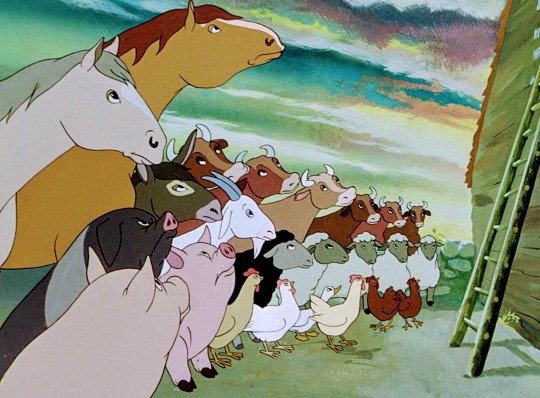

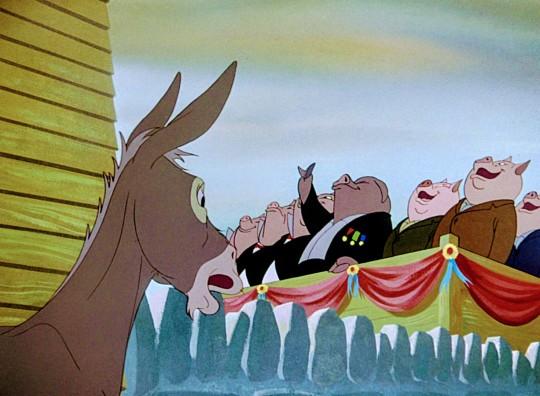
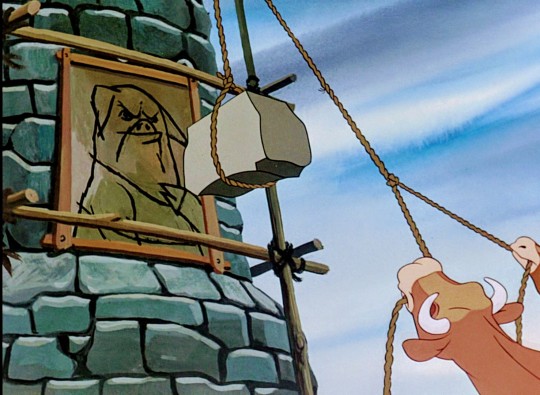
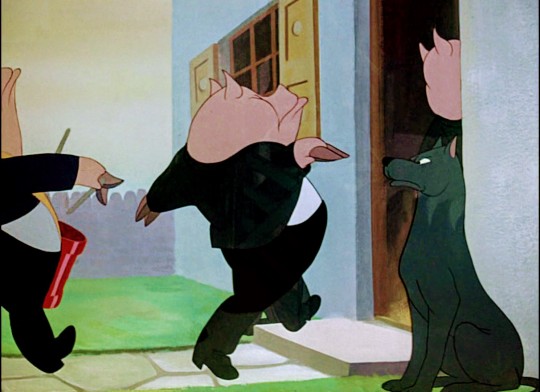


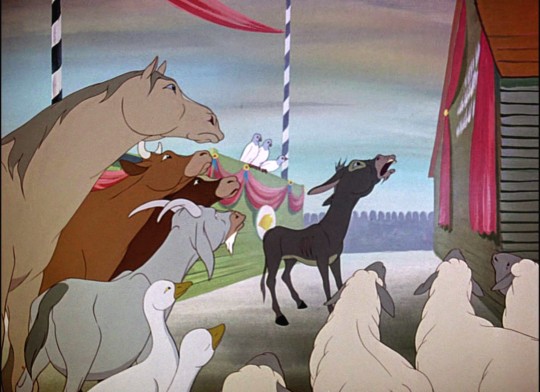
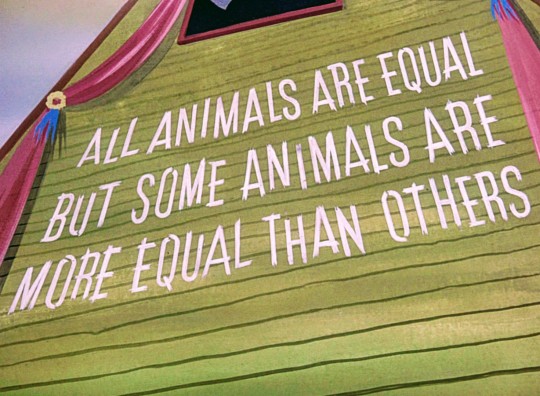
𝘼𝙣𝙞𝙢𝙖𝙡 𝙁𝙖𝙧𝙢 1954
#animal farm#george orwell#lit#1950s#20th century#art history#communism#politics#animation#revolution#animals#anime#art#film#literature#anarchy#chaos#pigs#dark academia#history
162 notes
·
View notes
Text
Zuni farmers in the southwestern United States made it through long stretches of extremely low rainfall between A.D. 1200 and 1400 by embracing small-scale, decentralized irrigation systems. Farmers in Ghana coped with severe droughts from 1450 to 1650 by planting indigenous African grains, like drought-tolerant pearl millet. Ancient practices like these are gaining new interest today. As countries face unprecedented heat waves, storms and melting glaciers, some farmers and international development organizations are reaching deep into the agricultural archives to revive these ancient solutions. Drought-stricken farmers in Spain have reclaimed medieval Moorish irrigation technology. International companies hungry for carbon offsets have paid big money for biochar made using pre-Columbian Amazonian production techniques. Texas ranchers have turned to ancient cover cropping methods to buffer against unpredictable weather patterns. But grasping for ancient technologies and techniques without paying attention to historical context misses one of the most important lessons ancient farmers can reveal: Agricultural sustainability is as much about power and sovereignty as it is about soil, water and crops.
379 notes
·
View notes
Text
in the early 20th century, Americans considered agricultural work to be more acceptable for kids than industrial labor. After all, kids had helped out on farms since time immemorial. Hine documented farm kids working at shockingly young ages. He found Amos and Horace, ages 6 and 4, working dawn to dusk on a tobacco farm:

Meanwhile, Jewel and Harold Walker (ages 6 and 5) picked 25 pounds of Alabama cotton each day:
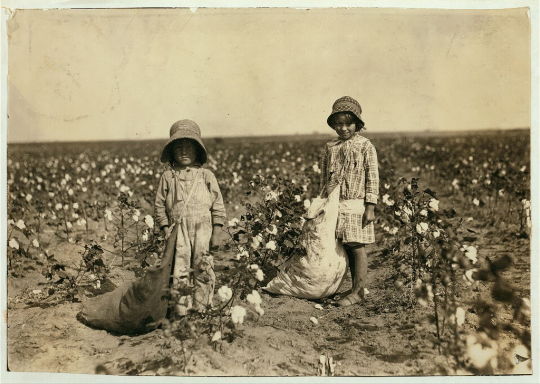
{WHF} {Ko-Fi} {Medium}
1K notes
·
View notes
Text

1975 in Kyiv Oblast, Soviet Ukraine.
#ukrainian history#vintage ukraine#farm life#rural#ukraine#country life#20th century#ussr#soviet union#village#farm#1975#1970s#vintage photo#cottage
195 notes
·
View notes
Text

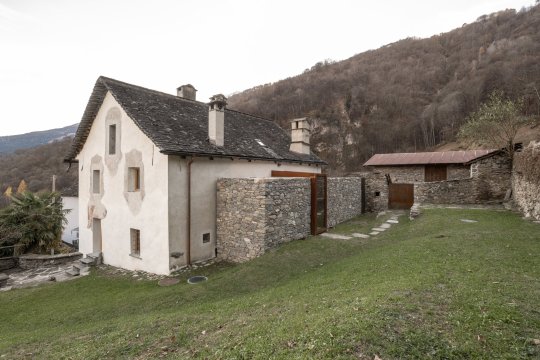




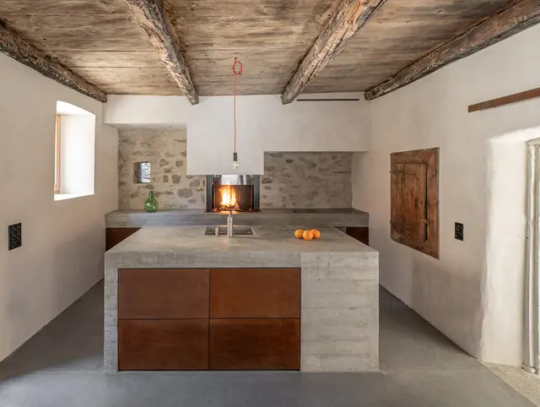
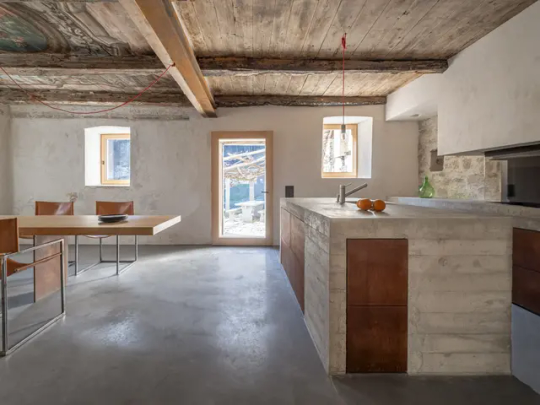
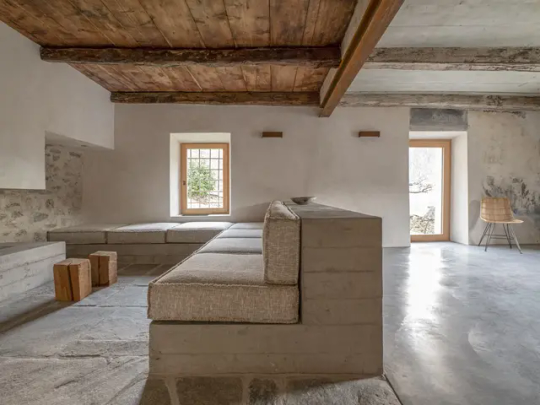

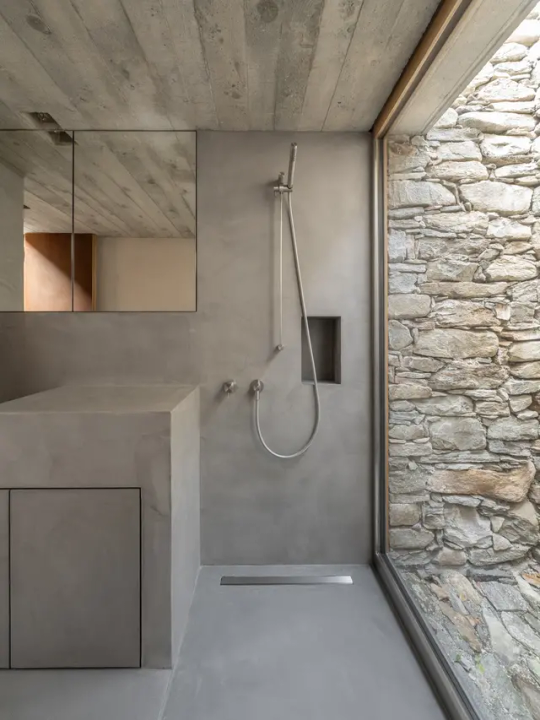

Casa Romagnolo, Acquarossa, Switzerland,
Courtesy: Wespi de Meuron Romeo
#art#design#architecture#minimal#nature#interior design#interiors#retreat#restauration#renovation#farm#casa#romagnolo#acquarossa#switzerland#wespi de meuron romeo#style#history
177 notes
·
View notes
Text

Sylt, Germany 1890s
#sylt#island#north sea#1890s#germany#history#vintage#photography#deutschland#architecture#people#19th century#farm#animals#windmill
202 notes
·
View notes
Text
Can't stop thinking about domestic Fiddauthor with dog
#The dog is from an au#Fidds gets Ford a German Shepherd from the farm with polydactyly#Ford is awkward about it at first#but when fidds shows him her polydactyly Ford IMMEDIATELY accepts her#he names her Jackie (after Jackalope)#she falls with him through the portal and somewhere in the multiverse they find something that lets her live as long as Ford does#cause I COULDN'T let her die#so she comes back out of the portal with him in nwhs#Mabel loves her#Stan hates her (bad relationship and/or history with German Shepherds due to being a criminal + how the FUCK did she live that long??)#gravity falls#ford pines#stanford pines#fiddleford mcgucket#fiddauthor#tink's rambles
50 notes
·
View notes
Text

The Lark Farm (Original title: La masseria delle allodole)
#films#cinema#armenian history#armenian literature#italian literature#the lark farm#armenian genocide
161 notes
·
View notes